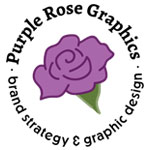I wrote a blog similar to this several years ago, you might see it floating around the internet, but I felt like it was time to redo it as the industry and landscape of the business community and design community have changed a lot! This is still one of my favorite questions to get asked!
“How do I choose the right graphic designer for my project?” It’s a question I get asked often by friends and colleagues. Let me be clear that there is no right way to do this. I can’t give you three easy steps and -voila- you’ve got a designer you love every time. I can however give you 4 tips that will make the entire process much less confusing and overwhelming!
Choosing a designer is a pretty personal thing. It’s important for you as the client. You want to work with someone who can fill your need and provide you the outcome expected. The client-designer relationship is also important for the designer. I won’t speak for other designers, but for me, I want my clients to enjoy working with me and to love the work I provide for them. Again, there are a lot of ways to make this type of choice, but here are the 4 tips I give to my friends.
1-Look over their website and especially their portfolio.
Keep in mind the type of work you need to be done. For most artists and graphic designers, their portfolio is where they share all their best work. Take a good look at the style of work presented. If you see that their style of the work shown matches what you need to be done that’s great. Some designers can design multiple visual styles others prefer only one style. Many designers have their portfolio cut into sections and others have everything listed together. When you are looking at their portfolio see what types of work they have shown too. Check to see if it is the type of work you need to be done.
One of the biggest myths I’ve heard is that designers should have every piece of work they’ve ever created shown on their portfolio. First off, showing every piece of work is not practical. The truth is that most designers, especially if they’ve been at it for a while, will have a lot of past work. Secondly, not all companies welcome the idea of sharing the work the designer did for them and it’s not always because the work is bad or will not be used as a lot of people tend to assume. Some of the reasons for a company not wanting the work shared on the designer’s portfolio include: wanting the work kept private for various reasons and non-disclosure agreements. Lastly, as mentioned above portfolios are meant to be a “highlight reel” featuring all of the person’s best work.
2- Check to see if they are a specialist.
Never assume a designer does the type of work you need to be done or that all designers do the same types of work. Quite a few designers choose a market they like or types of products they prefer to create and they cater to those niches. Many designers also have special skills and interests that they incorporate into their businesses. For example, some designers are classically trained artists and illustrators, others aren’t. Some designers only do branding, and others only do invitations or just packaging. I’ve even met designers that only work with a specific industry such as beauty products or real estate. There is a lot of variety and a lot of specialties. It is not a “one size fits all” type of industry.
3-Call them up and ask all your questions.
Most designers I’ve met, myself included, are completely happy to answer your questions about their services. I would recommend asking about their policies and contracts. It makes sense to not only understand how much you are spending but expectations in the delivery of proofs and the making of payments. If you have a very specific need, definitely make that known when you call or email them. For example, if you need work done in two languages or have a deadline for when things need to be completed.
4- Personality Compatibility.
If you are just doing a one-time project with no chance of repeat or have an ‘emergency’ project to complete then having a personality match isn’t as critical. However, If you are planning on doing a lot of projects with one designer or are thinking of putting a designer on retainer or a work-for-hire contract, commonly referred to as a 1099, having a personality match with your designer actually matters.
It matters because you want someone you can work with easily. My best clients and favorite projects always stem from compatibility in personality. A lot of that centers around the ability to communicate effectively with each other. For example, if you are a very straightforward type who values bluntness and has very strict deadlines for projects then a designer who doesn’t value those things is going to feel like a bit of a mismatch and vice versa.
Now that you have my recommendations, I hope you have an easier time choosing a graphic designer. The bottom line is this: it’s important that you feel comfortable with the designer you choose and that you like the work you receive from them.
If you’re ready to see how graphic design can massively uplevel your impact and income, drop me an email & I’ll hook you up with a FREE 1:1 Branding & Design Strategy Session where we’ll chat about your business, your goals, and give you tips on how design can get you where you want to be and see if working together makes sense!
